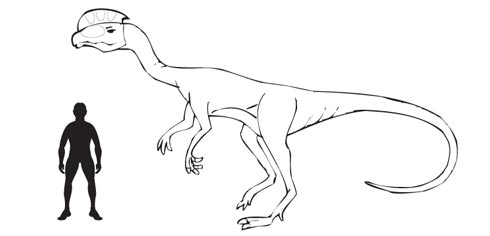Novel Teaching Exercise (Key Stage 2)
With the announcement of the discovery of clearly preserved theropod hand prints, our innovative teaching team have come up with an exciting class room activity involving the very latest scientific thinking about dinosaurs fore-limbs and hands.
Theropods, are a diverse group of lizard-hipped (saurischian) dinosaurs. They walked on their hind-limbs, trace fossils of their footprints and trackways are quite well researched but evidence of the posture adopted by their hands and fore-limbs, well that is a different matter.
Thanks to some new fossil data from a site in Utah, USA, scientists have gained further insight into the posture and position of these bipedal dinosaur’s fore-limbs. Interpretation of trace fossils from the site indicate that one particular dinosaur left resting hand prints in the Early Jurassic mud next to a lake, some 198 million years ago (Sinemurian faunal stage). The prints made in the sediment indicate that these dinosaurs may have held their hands differently to ours, the prints demonstrate a link to the evolution of the wings of birds.
To read the article about this discovery: Dinosaur Hand prints Reveal Link to Birds.
It is from theropod dinosaurs that birds (Aves) are believed to have evolved. Although much is known about the anatomy of theropod arms due to the fossil bones found, this new evidence indicates that they held their fore-limbs very differently to ours. Being humans, we have very sophisticated arms and hands, long since adapted to other tasks rather than locomotion. For example, we are able to pronate (twist) our arms very effectively and we have much more mobility in our arms and hands in general, when compared to a bipedal dinosaur.
It is not known for sure which type of dinosaur left the prints, but scientists suspect that this 4.5-metre-long animal was some sort of dilophosaur. This new research has enabled us to develop a lesson plan in which we can carry out simple experiments to prove that the “bunny” position for theropod fore-limbs, seen on many models and even in museum exhibits could be wrong.
An Illustration of A Dilophosaur

Picture credit: Everything Dinosaur
To view a model of a Dilophosaurus along with figures and replicas of other theropod dinosaurs: Dinosaur and Prehistoric Animal Models.
Yet another teaching activity to add to our repertoire.






Leave A Comment